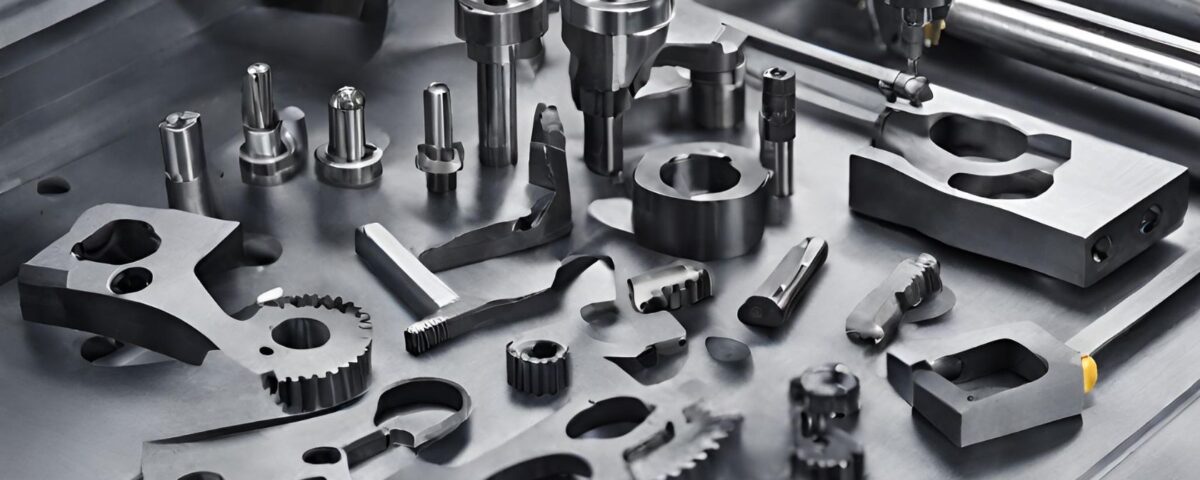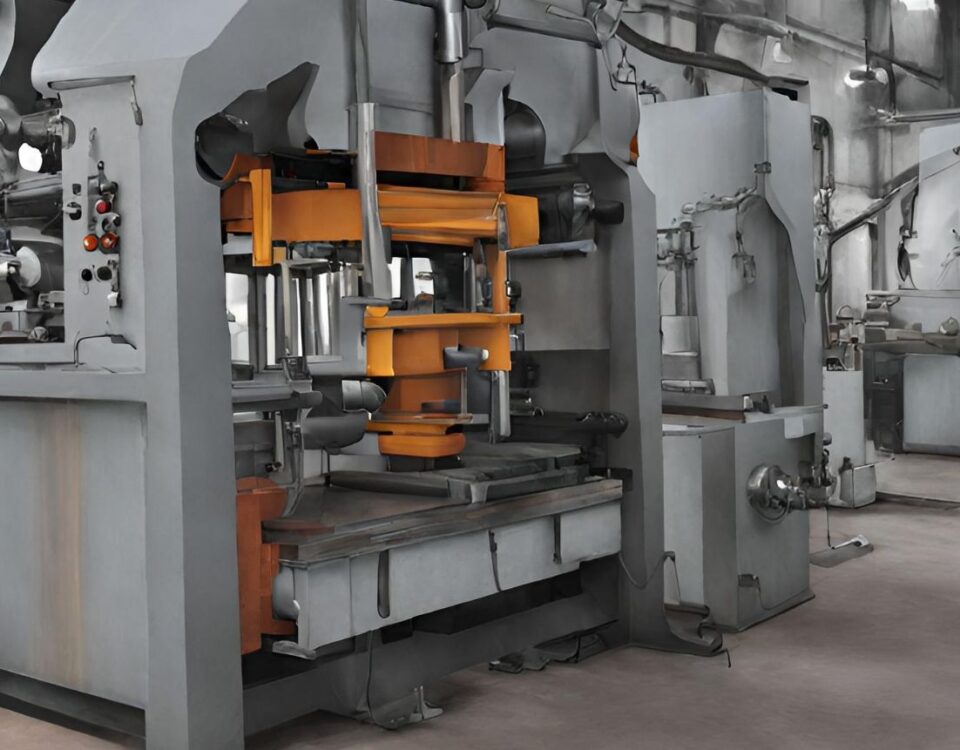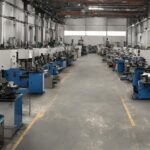
The Ultimate Guide to Finding the Best Machining Shop for Your Needs
8 April 2024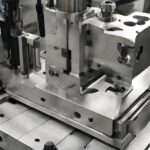
The Importance of the First Inspection in CNC Parts Quality Inspection
17 April 2024General classification of machine tool tools
Tools are essential assets in manufacturing processes, each categorized based on distinct processing methods and specialized applications. These classifications encompass a broad spectrum, ranging from turning, hole processing, and milling to intricate techniques like broaching, threading, and gear cutting. Modern advancements have introduced automated solutions such as automatic line and CNC machine tools, revolutionizing precision and efficiency in production.
Furthermore, knives, vital in various machining tasks, undergo classification through diverse criteria. Material composition delineates them into high-speed steel tools, carbide tools, ceramic tools, and advanced variants like cubic boron nitride (CBN) and diamond tools. Structural configurations offer another categorization avenue, dividing knives into integral tools, insert tools, machine-clamped tools, and composite tools, each tailored for specific machining demands. Additionally, classification based on standardization status distinguishes between standardized tools, ensuring universal compatibility and interchangeability, and non-standard tools, often customized to meet unique operational requirements. These nuanced classifications streamline tool selection processes, empowering manufacturers to optimize performance and enhance productivity across diverse industrial landscapes..
Introduction to commonly used tools
1. Turning tools
Turning tools are the most commonly used tools in metal cutting without special processing. They are used to process outer circles, end planes, threads, and inner holes on lathes and can also be used for grooving and cutting off. Structurally, turning tools can be classified into integral turning tools, welded assembly turning tools, and turning tools with mechanically clamped blades. Turning tools with mechanically clamped blades can be further divided into machine tool turning tools and indexable turning tools. The cutting performance of mechanically clamped turning tools is stable, and workers do not need to sharpen them. Because of their convenience and stable performance, they are increasingly used in modern production.
2. Hole processing tools
Hole machining tools can be broadly classified into two categories. The first type of tool is used to create holes from solid materials and includes commonly used tools such as twist drills, center drills, and deep hole drills. The second type of tool is used to rework existing holes in the workpiece and includes commonly used tools such as reamers, boring tools, and so on.
3. Milling cutter
The milling cutter is a widely used multi-edged rotary tool with many types. According to the purpose, they are:
1) For processing flat surfaces, such as cylindrical surface milling cutters, end mills, etc.;
2) For processing grooves, such as end mills, T-shaped cutters, and angle milling cutters;
3) For processing forming surfaces, such as convex semicircle and concave semicircle milling cutters and milling cutters for processing other complex-forming surfaces. The productivity of milling is generally higher, and the machined surface roughness value is larger.
4. Broach
A broach is a tool with multiple teeth that is highly accurate and efficient in cnc metal machining service. It is commonly used in mass production and can process a variety of internal and external surfaces. Broaching tools are classified into various types, such as internal and external broaching tools, based on the surface of the workpiece being processed. When using a broach for processing, it is essential to select the appropriate rake angle and relief angle of the cutter teeth based on the workpiece material, as well as determine the broach size according to the size of the workpiece's processing surface (such as the diameter of the circular hole). Two parameters also need to be determined while using a broach for processing.
(1) Tooth lift angle of [i.e., the difference in radius or height between the front and rear teeth (or tooth groups)];
(2) Tooth pitch p [i.e., the axial distance between two adjacent cutter teeth].
5. Thread cutter
A thread cutter is a specialized cutting tool used in machining to create threads on cylindrical surfaces like screws, bolts, and nuts. Its primary function is to produce precise and uniform helical ridges on the workpiece, enabling the interlocking and fastening of mechanical components. Thread cutters, available as taps for internal threads and dies for external threads, are aligned with the workpiece in machines like lathes or CNC machining centers. As the cutter rotates against the workpiece, it removes material methodically, forming the desired thread profile. Thread cutters are crucial in industries where threaded components are prevalent, such as automotive, aerospace, and machinery manufacturing, ensuring the accuracy and quality of threads for proper assembly and functionality of mechanical assemblies and structures.
6. Gear cutter
Gear cutters are a type of tool used to shape gear teeth. There are two types of gear cutters: forming gear cutters and generating gear cutters. Forming gear cutters include disc gear milling cutters and finger gear cutters, while gear-generating cutters include gear shaping cutters, gear hobs, and gear shaving cutters. When selecting gear hobs and gear shaper cutters, it is important to consider the following factors:
(1) The basic parameters of the tool (module, tooth profile angle, addendum coefficient, etc.) should be the same as the gear being processed.
(2) The accuracy level of the tool should be equivalent to the accuracy level required by the gear being processed.
(3) The rotation direction of the tool should be as consistent as possible with the rotation direction of the gear being processed. When hobbing spur gears, a left-hand gear cutter is generally used.
7. Automatic lines and CNC machine tools
In general, the cutting part of CNC tools is similar to that of regular tools. The difference lies in the fact that they are designed to meet the demands of CNC machine tools and automatic line processing, which require higher precision. CNC tools are categorized into three major systems that include the turning tool system, the drilling tool system, and the boring and milling tool system.
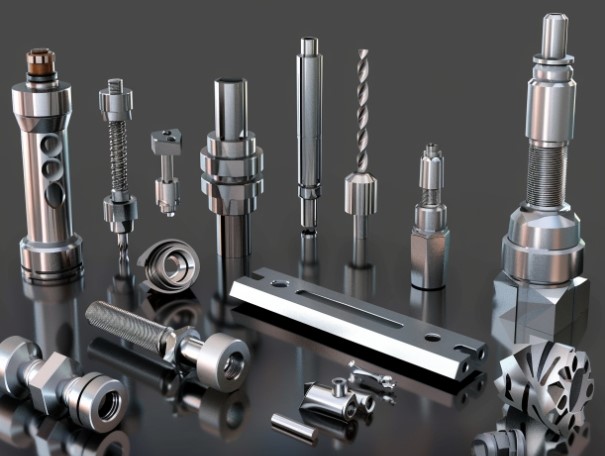
Commonly used tool types and applications
1. Turning tool
| Tool Type | Description | Common Uses |
|---|---|---|
| Rough Turning Tool | Mainly used to remove large amounts of material to approximate the required diameter. Sharp tip with slight roundness for durability. | Reducing size of workpiece, not focused on surface finish. |
| Fine-Turning Tool | Produces a very smooth surface. Round nose is larger than that of rough turning tools. | Finishing operations requiring high surface quality. |
| Round Nose Turning Tool | Versatile, commonly used. Can turn in both left and right directions. | Turning brass, creating curved surfaces, precision turning. |
| Cutting Off Turning Tool | Uses only the end for cutting through the workpiece. | Severing materials, turning grooves. |
| Screw Turning Tool (Dental) | Specifically for creating threads on screws or nuts, available in various thread shapes like V-shaped, trapezoidal, or square. | Turning screws, nuts, with specific thread designs. |
| Boring Turning Tool | Used for enlarging pre-existing holes to precise dimensions or creating true straight-hole surfaces. | Machining drilled or cast holes to precise specifications. |
| Side Turning Tool | Used for turning the end face of a workpiece. | Finishing the ends of shafts or shoulders, with specific tools for right or left. |
| Right-Hand Turning Tool | Moves from right to left to turn the outer diameter of the workpiece. | Turning the outer diameter from right to left. |
| Left-Hand Turning Tool | Moves from left to right to turn the outer diameter of the workpiece. | Turning the outer diameter from left to right. |
| Cutting Knife | Used for making cuts or forming grooves. | Cutting or grooving operations. |
| Inner Hole Turning Tool | Specialized for turning inside holes. | Machining internal holes. |
| External Thread Turning Tool | Used for creating external threads on workpieces. | Turning external threads. |
| Internal Thread Turning Tool | Used for machining internal threads within a workpiece. | Turning internal threads. |
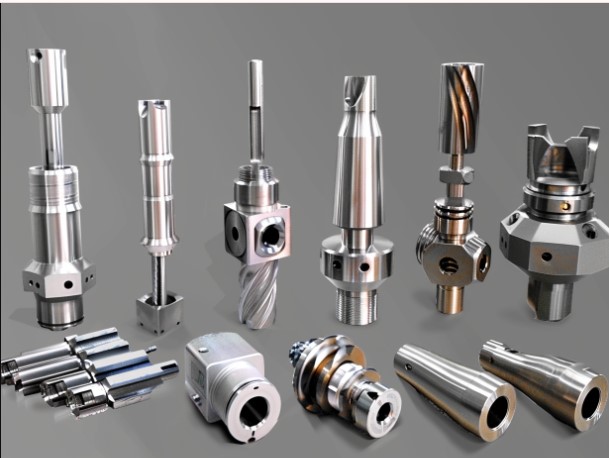
2. Hole processing tools
There are two types of hole-processing tools: one that creates holes in solid materials and another that reprocesses existing holes in the workpiece.
Commonly used drill bits mainly include twist drills, flat drills, center drills, deep hole drills, and nesting drills. Although reamers and countersinks cannot drill holes in solid materials, they are also customarily classified as drill bits.
A drill bit is a tool used to create holes in solid materials, either by drilling through them or by enlarging existing holes. Reamers are tools used to smooth and enlarge holes. They can be categorized as hand reamers, which are used manually, and machine reamers, which are used with a machine. Machine reamers can be further divided into two types based on their handle: straight-handle reamers and tapered-handle reamers. Hand reamers have a straight handle.
Reamers come in various types, each designed for specific uses. As such, there are numerous standards for reamers. The primary function of a reamer is to improve the accuracy of a hole that has been drilled or expanded on a cnc machined workpiece, as well as to reduce its surface roughness. It is a tool used for finishing and semi-finishing the hole, with the machining allowance generally being tiny after reamer processing.
3. Milling cutter
Milling cutters are essential tools in machining, designed to remove material from workpieces through rotary cutting. The choice of milling cutter depends on the specific requirements of the task, such as the material to be cut, the type of cutting needed, and the desired finish on the workpiece. Below, I've expanded the descriptions of various types of milling cutters and their primary uses:
-
Flat Head Milling Cutter: Primarily used for rough milling, this cutter excels in removing a significant amount of material quickly. It is ideal for machining small area horizontal planes or performing fine milling on contours. The flat head design allows for efficient material removal, making it suitable for initial roughing operations.
-
Ball End Milling Cutter: Designed for the semi-finishing and finishing of curved surfaces, the ball end milling cutter can navigate complex surface contours with ease. This type of cutter is also used for finishing small chamfers on steep surfaces or straight walls, providing smooth and precise cuts.
-
Flat-End Milling Cutter with Chamfer: This versatile tool combines the capabilities of flat-end milling with added chamfering edges. It is used for both rough milling—to rapidly remove large volumes of material—and for fine milling, where it achieves delicate chamfers on flat surfaces as opposed to steeper ones.
-
Forming Milling Cutters: This category includes specialized tools like chamfering cutters, T-shaped milling cutters, drum cutters, toothed cutters, and internal R cutters. Each cutter is designed for creating specific shapes and profiles on a workpiece. These cutters are particularly useful in tasks requiring precise form and dimension.
-
Chamfering Cutter: Tailored to create a specific chamfered edge on a part, chamfering cutters come in various shapes to produce round or oblique chamfers. The design of each cutter corresponds closely with the chamfer shape it creates, ensuring precision and consistency.
-
T-Shaped Cutter: Used specifically for milling T-shaped slots, this cutter is essential for jobs requiring this particular slot profile. It is engineered to produce sharp and accurate T-slots in a single pass.
-
Tooth Cutter: This type of cutter is used for producing various tooth forms, such as those found in gears. The precision and design of the tooth cutter allow for detailed and specific tooth shapes, critical for components in mechanical systems.
-
Rough Leather Cutter: Particularly designed for cutting softer metals like aluminum and copper alloys, the rough leather cutter enables rapid material removal. Its robust design and sharp cutting edges allow for quick and efficient rough milling.
Conclusion
In exploring the diverse applications of CNC tools, it's evident that these precision instruments are indispensable across various industries, from aerospace to automotive. CNC machining offers unmatched accuracy, repeatability, and versatility, making it an essential component in manufacturing complex and high-quality parts. Whether it's turning, milling, or cutting, the right CNC tools can drastically enhance productivity and efficiency in your production processes.
For businesses looking to push the boundaries of innovation and efficiency, investing in top-tier CNC tools is a strategic move. We invite manufacturers and engineers to explore our wide range of CNC tools tailored for every specific need, ensuring you can meet your project requirements with precision. Visit our website or contact our customer service team to learn more about how our CNC solutions can transform your production line. Let us help you achieve excellence in manufacturing with the right tools at your disposal.
Continue to improve to ensure product quality in line with market and customer standard requirements. Machining-CNC has a quality assurance system that has been established for high-quality 2022 Hot Sales Plastic POM ABS Accessories Drilling 5 axis cnc machining Services; Trust Anebon, and you'll gain far more. Be sure to really feel free of charge to contact us for additional details; Anebon assures you of our best attention at all times.
High-quality auto spare parts, milling parts, and stainless steel turning parts are made in China, Machining-CNC. Products of Anebon have obtained more and more recognition from foreign clients and established long-term and cooperative relationships with them. Machining-CNC will provide the best service for every customer and sincerely welcome friends to work with Machining-CNC and establish mutual benefits together.

